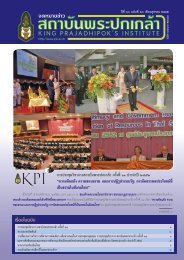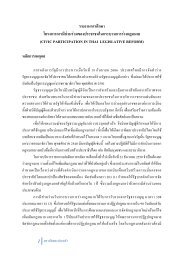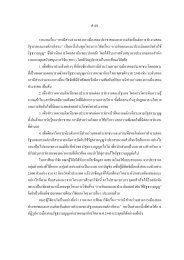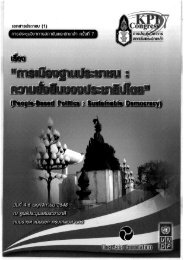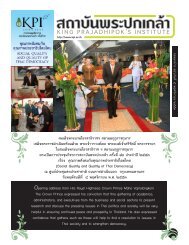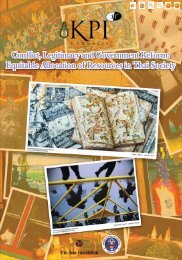SUFFiciENcy EcONOMy ANd GRASSROOtS DEvElOPMENt
SUFFiciENcy EcONOMy ANd GRASSROOtS DEvElOPMENt
SUFFiciENcy EcONOMy ANd GRASSROOtS DEvElOPMENt
Create successful ePaper yourself
Turn your PDF publications into a flip-book with our unique Google optimized e-Paper software.
The Meaning of Sufficiency Economy <br />
International Conference<br />
257<br />
A case study by Razak et al (2009) showed that reducing the excess electricity<br />
from 55% to 3% again reduces the Levelized Cost of Energy by about 50%. This<br />
implies that renewable energy options to be deployed must be meeting the local<br />
requirements according to their hourly demand load curves. Another alternative is to<br />
limit the load towards the dominant power supplier in the renewable energy hybrid<br />
system. This is to ensure that the initial capital and annualized cost to be at its<br />
minimum. Literature reports that in general, at places with higher wind speeds, it is<br />
more suited that wind to solar ratio be greater than one (around 1.43) (Habib et al<br />
1999). In some cases, it has gone as high as 4.5. Moreover, this ratio, generally<br />
greater than one, is very site specific and varies from site to site. Hence, on a general<br />
scale a ratio of 1.85 was arbitrarily chosen to take round figure values for the ease of<br />
simulation of payback analysis. <br />
The base case assumptions and calculations for simulation of payback analysis<br />
were as follows:- <br />
1. Windy regions include Tamil Nadu, Rajasthan, Andhra Pradesh, Karnataka<br />
and Gujarat according to the Wind Map of India (Figure XX) (DOT 2008).<br />
Hence, the analysis including biomass fuel price and electricity tariff for<br />
wind and biomass takes into account the prevailing prices in these regions<br />
only.<br />
2. Total requirement is calculated in kWh/day of a community, and that is<br />
assumed to be constant. To fulfill these energy requirements, individual<br />
models are developed with varying capacities according to their CUF/PLF<br />
and these are analyzed for their payback.<br />
3. Electricity tariffs for solar are constant at 18.44 Rs/kWh in all states for the<br />
first year of operation.<br />
4. Plant is assumed to have been built by starting of FY 2009-2010. Hence, its<br />
capital cost is considered to be same as normative cost for the FY 2009-<br />
2010. This is taken as Fixed cost component and is reflected in FY 0 in the<br />
simulation of various models to highlight its contribution.<br />
5. The minimum lifetime out of solar, wind and biomass is that of biomass –<br />
20 years (CERC 2010).<br />
6. The tariff period is valid for 13 years. Hence, payback analysis simulation<br />
has been carried out till 13 years.<br />
7. The average CUF or PLF of the plant varies with time to time. In general,<br />
we assume the efficiency increases slightly initially (as stabilization issues<br />
get resolved) and then decrease (as equipments wear out). <br />
8. Biodiesel generator and battery back-up costs and revenues aren’t included<br />
as they are considered to be same for the same capacity requirements. As<br />
their costs and revenues would remain same in all the cases



